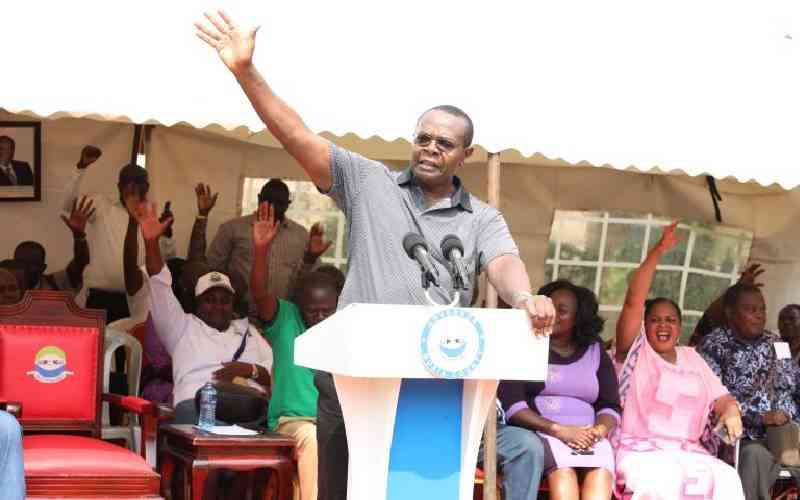By Billow Kerrow
My sojourn in Malaysia this past week has imbibed me a wealth of information I did not have about this great nation in recent years, except of course the tragic loss of their airliner MH370 last month. Historically, Malaysia and Kenya shared British colonial subjugation, with Malaysia gaining her freedom a few years earlier. A multi-ethnic (nearly 100 ethnic groups!) and a multi-religious nation of about 30 million people, Malaysia was a basket case at independence. Indeed, it is said that President Jomo Kenyatta’s government gave them $2 million aid in 1973 when their PM visited our country.
Today, it is a newly-industrialised nation whose economy is manufacturing-based and export-driven, and spurred by tech-savvy, knowledge-based and capital-intensive industries. It is now one of the world’s largest producers of electronic and electrical products, which account for a third of its exports. Agriculture, mainly rubber and palm oil, accounts for only 9 per cent of its exports. Its GDP is nearly $500 billion, with a per capita income of $15,800.
Less than 2 per cent are unemployed in a nation that accommodates nearly five million immigrants. They have managed to reduce poverty levels from 50 per cent in 1970 to 1.7 per cent in 2013. It is interesting to note that most targets in their development blueprint, Vision 2020 which was enunciated in 2006, have been achieved well ahead of time! Politics is not the usual high octane that we know in our country. Moreover, we were told that it is part of their national goals and values that even the media restrains itself from negative publicity. That positive profiling of the national image endears not only investors to the country but also tourists. Last year alone, Foreign Direct Investments hit over $12 billion, and they had over 26 million tourists!
Much of the country’s economic transformation can be traced to their former iconic Prime Minister, Mahathir Mohamed. He was a dynamic, bold and visionary risk-taker who never shied away from controversy in order to get things done. He believed in, and lived, the ‘Yes We Can’ slogan of Obama long before the latter came on the scene. He is also credited with ensuring co-existence of the multi-ethnic and religious groups in the country, encouraging tolerance of all religions and abhorring internal communal violence. On the international scene, he can best be remembered for his unwavering support for the non-aligned movement, and rejection of Western hegemony in politics. He would argue that one size doesn’t fit all in democracy, and the so-called democratically governed countries such as India and Bangladesh have not necessarily been quite successful.
Indeed, when you look at their governance institutions, one gets the impression that they are not as strong, and independent, as those in our country. The country is a constitutional monarchy led by a king that is surprisingly rotated among nine federal states with hereditary rulers every five years without a hustle. The Prime Minster, appointed by the king, runs the government, which is oversighted by a bicameral parliament. The Senate is to all intents and purposes an appendage of the all-powerful Lower House, and two-thirds of its members are appointed by the king.
Despite its federal status, the state governments and assemblies have very limited role, merely to utilise the local revenues they collect to maintain utilities. The development programme, as well as social services such as schools and hospitals, are centralised under the mandate of the federal government. The fundamental difference with our nation is the commitment to equitable distribution of resources and service delivery that underpins its success in achieving a high level of development.
Looking back at how this nation triumphed over historical adversity, I am convinced our nation can aspire to a higher level if we can focus on the economy.
The writer is a political economist & Mandera County Senator
 The Standard Group Plc is a
multi-media organization with investments in media platforms spanning newspaper
print operations, television, radio broadcasting, digital and online services. The
Standard Group is recognized as a leading multi-media house in Kenya with a key
influence in matters of national and international interest.
The Standard Group Plc is a
multi-media organization with investments in media platforms spanning newspaper
print operations, television, radio broadcasting, digital and online services. The
Standard Group is recognized as a leading multi-media house in Kenya with a key
influence in matters of national and international interest.
 The Standard Group Plc is a
multi-media organization with investments in media platforms spanning newspaper
print operations, television, radio broadcasting, digital and online services. The
Standard Group is recognized as a leading multi-media house in Kenya with a key
influence in matters of national and international interest.
The Standard Group Plc is a
multi-media organization with investments in media platforms spanning newspaper
print operations, television, radio broadcasting, digital and online services. The
Standard Group is recognized as a leading multi-media house in Kenya with a key
influence in matters of national and international interest.




